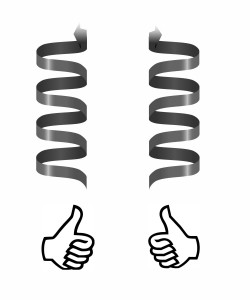By Catherine Zandonella, Office of the Dean for Research
A study by Princeton researchers presents evidence for a long-sought phenomenon — first theorized in the 1960s and predicted to be found in crystals in 1983 — called the “chiral anomaly” in a metallic compound of sodium and bismuth. The additional finding of an increase in conductivity in the material may suggest ways to improve electrical conductance and minimize energy consumption in future electronic devices.
“Our research fulfills a famous prediction in physics for which confirmation seemed unattainable,” said N. Phuan Ong, Princeton’s Eugene Higgins Professor of Physics, who co-led the research with Robert Cava, Princeton’s Russell Wellman Moore Professor of Chemistry. “The increase in conductivity in the crystal and its dramatic appearance under the right conditions left little doubt that we had observed the long-sought chiral anomaly.”
The study was published online today in the journal Science.

The chiral anomaly – which describes how elementary particles can switch their orientation in the presence of electric and magnetic fields – stems from the observation that right- and left-handedness (or “chirality” after the Greek word for hand) is ubiquitous in nature. For example, most chemical structures and many elementary particles come in right- and left-handed forms that are mirror images of each other.
Early research leading up to the discovery of the anomaly goes back to the 1940s, when Hermann Weyl at the Institute for Advanced Study in Princeton, New Jersey, and others, discovered that all elementary particles that have zero mass (including neutrinos, despite their having an extremely small mass) strictly segregate into left- and right-handed populations that never intermix.
A few decades later, theorists discovered that the presence of electric and magnetic fields ruins the segregation of these particles, causing the two populations to transform into each other with observable consequences.
This field-induced mixing, which became known as the chiral anomaly, was first encountered in 1969 in work by Stephen Adler of the Institute for Advanced Study, John Bell of the European Organization for Nuclear Research (CERN) and Roman Jackiw of the Massachusetts Institute of Technology, who successfully explained why certain elementary particles, called neutral pions, decay much faster — by a factor of 300 million — than their charged cousins. Over the decades the anomaly has played an important if perplexing role in the grand quest to unify the four fundamental forces of nature.
The prediction that the chiral anomaly could also be observed in crystals came in 1983 from physicists Holger Bech Nielsen of the University of Copenhagen and Masao Ninomiya of the Okayama Institute for Quantum Physics. They suggested that it may be possible to detect the anomaly in a laboratory setting, which would enable researchers to apply intense magnetic fields to test predictions under conditions that would be impossible in high-energy particle colliders.
Recent progress in the development of certain kinds of crystals known as “topological” materials has paved the way toward realizing this prediction, Ong said. In the crystal of Na3Bi, which is a topological material known as a Dirac semi-metal, electrons occupy quantum states which mimic massless particles that segregate into left- and right-handed populations.
To see if they could observe the anomaly in Na3Bi, Jun Xiong, a graduate student in physics advised by Ong, cooled a crystal of Na3Bi grown by Satya Kushwaha, a postdoctoral research associate in chemistry who works with Cava, to cryogenic temperatures in the presence of a strong magnetic field that can be rotated relative to the direction of the applied electrical current in the crystal. When the magnetic field was aligned parallel to the current, the two chiral populations intermixed to produce a novel increase in conductivity, which the researchers call the “axial current plume.” The experiment confirmed the existence of the chiral anomaly in a crystal.
“One of the key findings in the experiment is that the intermixing leads to a charge current, or axial current, that resists depletion caused by scattering from impurities,” Ong said. “Understanding how to minimize the scattering of current-carrying electrons by impurities — which causes electronic devices to lose energy as heat — is important for realizing future electronic devices that are more energy-efficient. While these are early days, experiments on the long-lived axial current may help us to develop low-dissipation devices.”
The research was supported by the National Science Foundation, the Army Research Office and the Gordon and Betty Moore Foundation.
The paper, “Evidence for the chiral anomaly in the Dirac semimetal Na3Bi,” was published online in the journal Science by Jun Xiong; Satya K. Kushwaha; Tian Liang; Jason W. Krizan; Max Hirschberger; Wudi Wang; Robert J. Cava; and N. Phuan Ong.

You must be logged in to post a comment.